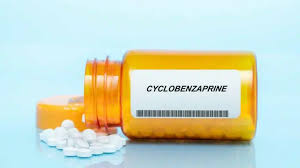Dose escalation and dose expansion are terms that have unique significance in early-phase clinical trials, especially for studies of new drugs being developed as treatment options to help cure cancer. It reflects different phases of identifying proper dosing and safety/efficacy testing. And it is imperative to comprehend the differences between them when interpreting trial results and assessing a drug's development pathway.
Dose escalation is usually found as Phase 1 of a study in which one important objective evaluation point may be maximum tolerated dose (MTD) and to define any dose limiting toxicity (DLT). The technique is to hit these patients with a small dose of the drug and slow-moving cohorts followed by increasing doses until effects started cropping-up. Three patients are started on a typical dosing in a 3+3 design. If they tolerate it well, the next cohort gets a higher dose. This cycle repeats until dose-limiting toxicities (DLTs) occur in the specified number of patients, which determines the MTD. This phase usually consists of less than 30 participants and is aimed at safety rather then effectiveness. More than 80% of Phase 1 oncology trials in implemented adopting design this way by, for example, in the year 2022.
Dose expansion, in contrast is after the MTD has been defined — usually still within the same trial but as a separate cohort. Having a confirmed dose, the purpose of this cohort is to accumulate additional safety data at the maximum tolerated dose and evaluate preliminary efficacy endpoints as well as biomarkers. Dose expansion, on the other hand, may be comprised of hundreds—or even one hundred patients—a large enough sample size to produce a wealth of data about drug activity in various patient populations. This phase is ideally suited to find the earliest signs of activity in particular sub populations or tumors.
The best part of these phases is that they are all supported by industry terms like first-in-human trials, pharmacokinetics and pharmacodynamics. Pharmacokinetic (PK) and pharmacodynamic (PD) analyses would yield important information about the distribution and clearance of a drug at different doses, paving the way for dose escalation. In contrast, dose-expansion trials are specifically designed to evaluate efficacy signals and safety in a broader population of patients that aim at optimization of dosage selection for later-phase trials.

We see one example of this in the real-world with regards to the creation of an immunotherapy drug known as pembrolizumab (Keytruda). The authors concluded that during its phase 1 first-in-human trials, dose escalation was required to establish MTD for MRx0518 and dose expansion needed to be cut across multiple cancer types. Make a more educated design for subsequent Phase 2 and Phase 3 trials, leading to its success in multiple indications.
There are also differences in financial and time funds involved in executing these stages. This represents a 300 percent increase in terms of dose escalation trial duration and resource requirements for evaluating safety tolerability only. Dose expansion, however, requires more thorough scrutiny of patient safety monitoring and bigger cohorts for statistical robustness, generally spread out over a longer time frame. One industry report from 2021 estimates that dose expansion trials cost between 30% and 50%, on average, more than escalation designs overall because of their increased magnitude and complexity.
Formally, if the abstract presented at #ASCO14 is accurate (we will need to have a look at actual presentations), Dr. Janet Woodcock must be delighted with this trial design since she notably remarked dose expansion cohorts “have become a critical bridge between early-phase and later-phase trials offering a glimpse into [a drug's] real-world potential while still in an experimental setting.”
This will help you understand better about these different trial designs: Dose escalation vs dose expansion which contains detailed explanations and cases on each phase for drug development.
To put it simply, from the observational (i.e. dose escalation) perspective we try to identify a safe and efficacious MTD while with the interventional component (dose expansion), assay this same anti-cancer activity within larger patient population groups. Together, these provide a well-rounded view of early-phase clinical trials that serve as the foundation for later studies to establish clinical efficacy.